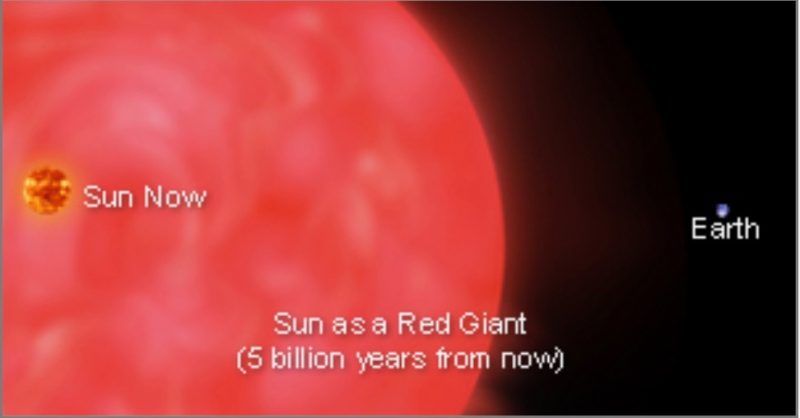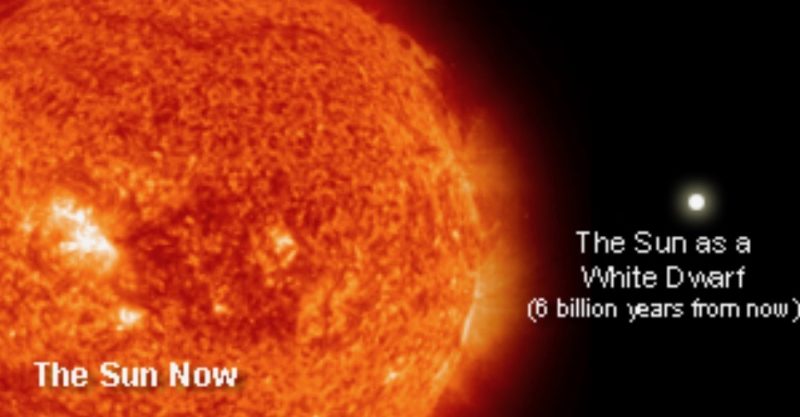When our sun dies, it’ll swell into a red giant.
When the sun dies
What does death mean for the sun? It means our sun will run out of fuel in its interior. It’ll cease the internal thermonuclear reactions that enable stars to shine. It’ll swell into a red giant, whose outer layers will engulf Mercury and Venus and likely reach the Earth. Life on Earth will end.
If the sun were more massive – estimates vary, but at least several times more massive – it would explode as a supernova. So … no supernova. But what? What happens next? An international team of astronomers used a stellar data-model that predicts the life cycle of stars to answer this question.
Their research was published in the peer-reviewed journal Nature Astronomy and is available to read at arXiv.org. It suggested that the sun is almost exactly the lowest mass star that – at the end of its life – produces a visible, though faint, planetary nebula.
The 2024 lunar calendars are here! Best Christmas gifts in the universe! Check ’em out here.

About planetary nebulae
The name planetary nebula has nothing to do with planets. It describes a massive sphere of luminous gas and dust, material sloughed off an aging star. In the 1780s, William Herschel called these spherical clouds planetary nebulae because, through his early telescope, planetary nebulae looked round, like the planets in our solar system.
Astronomers already knew that 90% of all stars end their active lives as planetary nebulae. They were reasonably sure our sun would meet this fate. The key word here is visible. For years, scientists thought the sun has too low mass to create a visible planetary nebula.
Albert Zijlstra of the University of Manchester in England is a co-author of the study. He said in a statement:
When a star dies it ejects a mass of gas and dust – known as its envelope – into space. The envelope can be as much as half the star’s mass. This reveals the star’s core, which by this point in the star’s life is running out of fuel, eventually turning off and before finally dying.
It is only then the hot core makes the ejected envelope shine brightly for around 10,000 years – a brief period in astronomy. This is what makes the planetary nebula visible. Some are so bright that they can be seen from extremely large distances measuring tens of millions of light-years, where the star itself would have been much too faint to see.

The fate of our sun
Will that be the fate of our sun? Will it – at the end of its life – become briefly visible to alien astronomers on planets millions of light-years away? These astronomers say no. They say their models predict that our sun – though forming a planetary nebula at the end of its life – will remain faint.
Read more about this study from the University of Manchester
By the way … what happens next? Eventually, the planetary nebula will disperse and fade. With its thermonuclear fuel gone, the sun will no longer be able to shine. The immensely high pressures and temperatures in its interior will slacken. The sun will shrink down to become a dying ember of a star, known as a white dwarf, only a little larger than Earth.

Bottom line: A study suggests our sun is about the lowest mass star that – at the end of its life – produces a visible, though faint, planetary nebula. What that is … and more on the fate of our sun, here.
Source: The mysterious cut-off of the Planetary Nebula Luminosity Function











